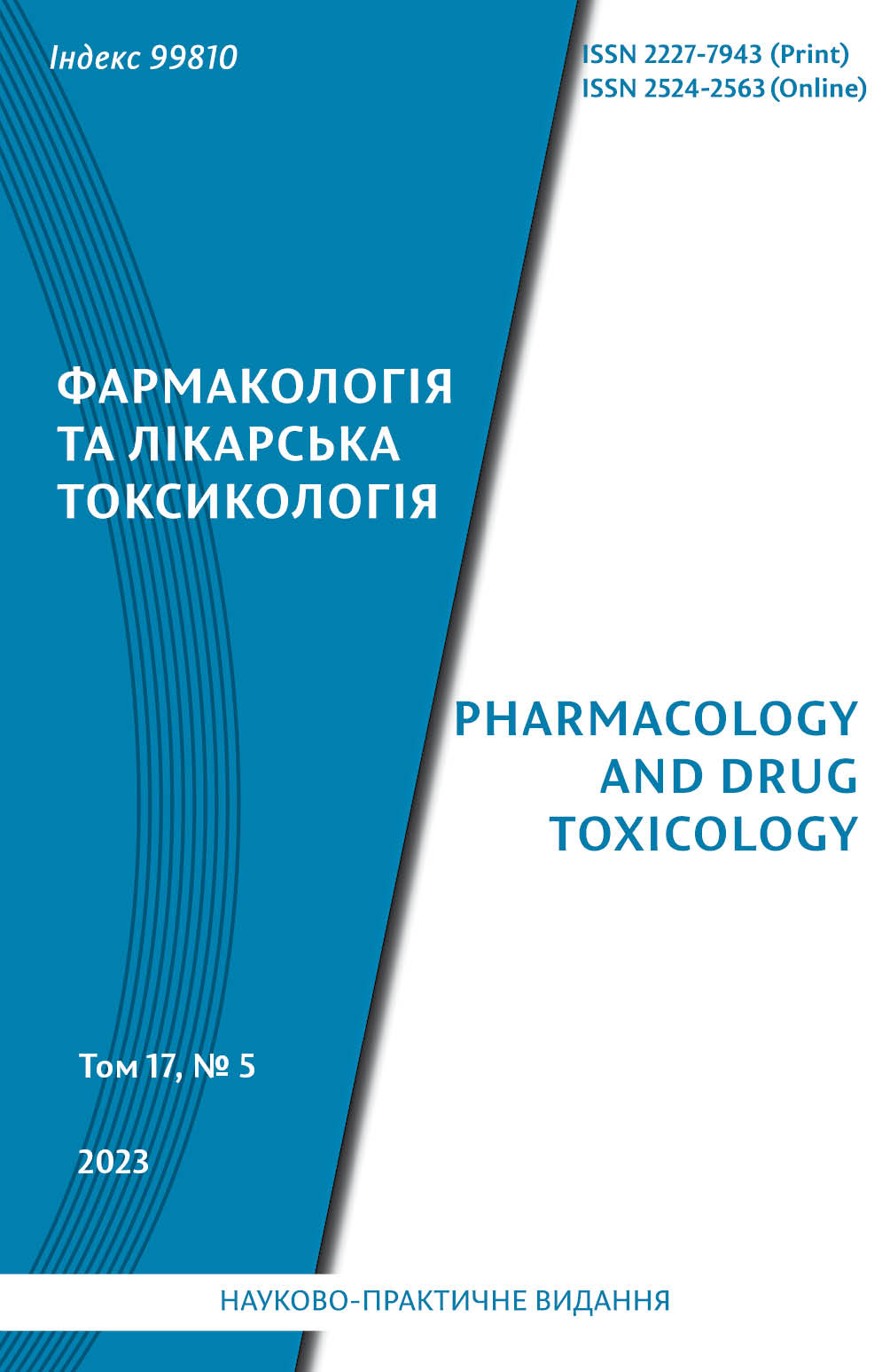Abstract
The aim of the study was to investigate the state of the H2S system, the level of markers of inflammation, oxidative stress and apoptosis in the liver and kidneys of rats with acute alcohol injury (AAI) and to evaluate the possibility of correction with a hydrogen sulfide donor, quercetin and their combination.
The experiments were conducted on 91 white nonlinear sexually mature male rats, which were divided into five groups. Animals of groups 2–5 were modeled AAI by intragastric administration of 40% ethanol at a dose of 20 ml/kg for 7 days. In order to correct the AAI, animals of group 3 were administered quercetin (100 mg/kg, intraperitoneally, once/day, for 7 days), group 4 – the hydrogen sulfide donor NaHS-H2O (3 mg/kg, intraperitoneally, once/day, for 7 days), group 5 – both quercetin and NaHS-H2O in the above doses. Animals of group 1 (control) received an equivalent amount of solvents. For biochemical studies, postnuclear supernatants of liver and kidney homogenates were prepared, in which the H2S content, rate of its utilization, malondialdehyde (MDA) level, superoxide dismutase (SOD) activity were determined by spectrophotometric methods and TNFα level by enzyme-linked immunosorbent assay. In addition, flow cytometry was used to determine the proportion of liver and kidney cells with fragmented DNA (apoptosis marker).
It was found that AAI was accompanied by impaired H2S metabolism in the liver and kidneys: a significant decrease in H2S content by 28.1 and 35.1% (p < 0.05) and an increase in the overall rate of its utilization by 49.9 and 61.7% (p < 0.05) respectively were observed compared to the control. In the liver and kidneys of rats with AAI, induction of inflammation (TNFα level increased by 2.29 and 2.72 times compared to control, p < 0.05), oxidative stress (MDA content increased by 2.0 and 3.1 times, and SOD activity decreased by 29.8 and 35.0%, p < 0.05) and apoptosis (the proportion of cells in the SUBG0G1 phase increased by 32.0 and 37.9% respectively, p < 0.05), which was closely associated with H2S deficiency (rs = -(0.54–0.75), p < 0.05) were shoun.
The proposed therapy reduced H2S metabolism disorders, showed anti-inflammatory, antioxidant and antiapoptotic activities, although its effectiveness depended on the selected correctors. The most pronounced hepato- and nephroprotection in terms of AAI was provided by the combination «Quercetin + NaHS», inferior to NaHS monotherapy, and the least effective was quercetin.
